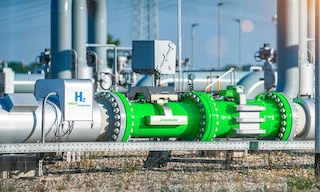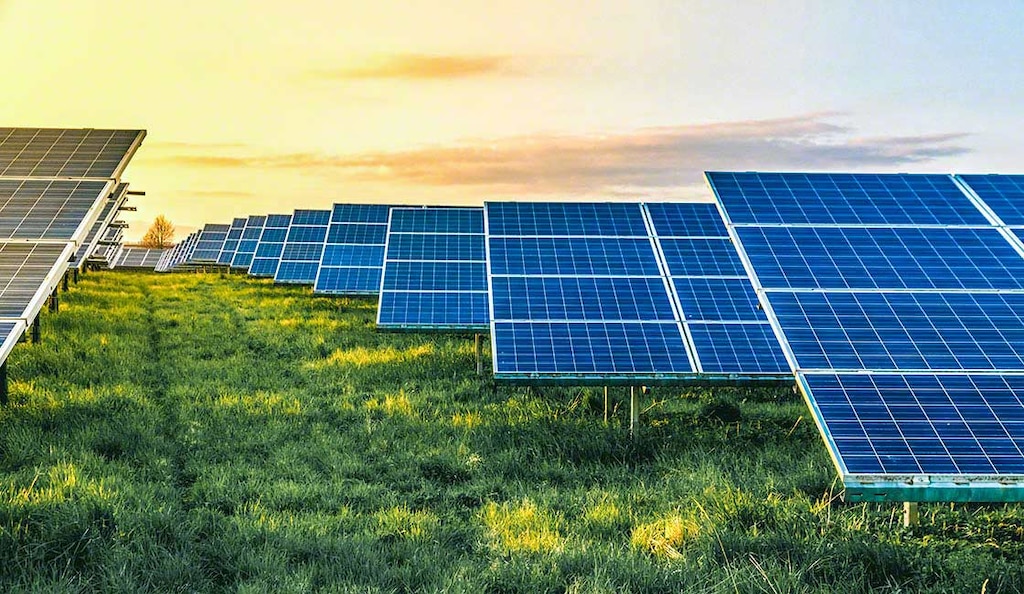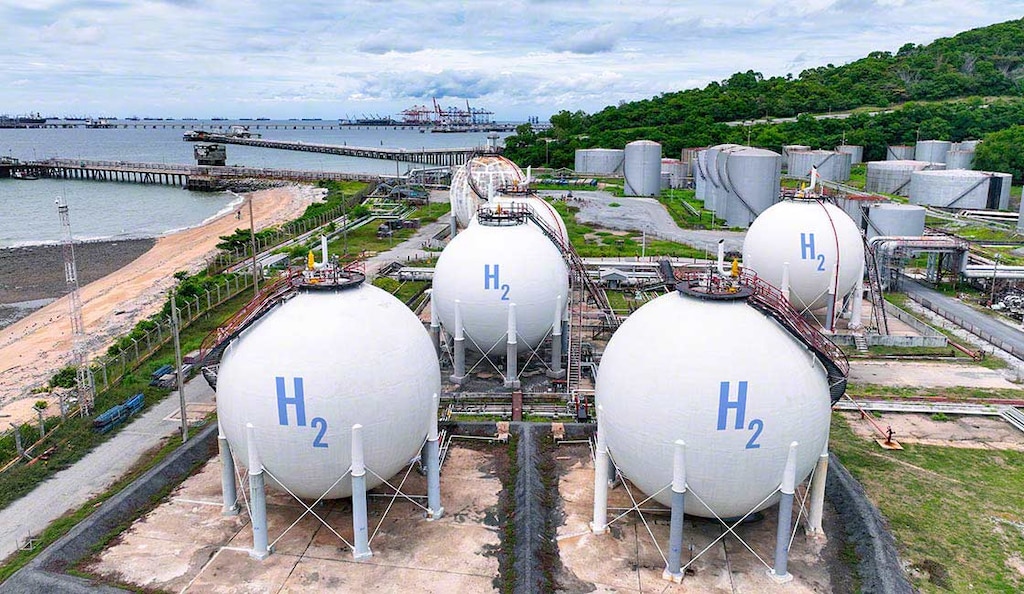
Green hydrogen: A clean energy source for logistics
At a time when countries worldwide are pursuing decarbonization to reduce pollution and protect the environment, renewable energy and green fuels like green hydrogen are becoming increasingly important.
What is green hydrogen?
Hydrogen is a chemical element. While there are various ways to produce it as a fuel, it’s typically generated through a chemical process known as electrolysis. In this process, hydrogen (H₂) and oxygen (O₂) are separated from water (H₂O) using an electric current. When that electricity comes from renewable sources, the resulting product is green hydrogen. Because of this, clean hydrogen is seen as a key element in the path toward decarbonization and meeting 2050 climate commitments.
Hydrogen is the lightest chemical element and the most abundant in the universe. Although it has long been used as a raw material in the chemical and metallurgical industries and as a fuel, the large-scale energy use of green or low-emission hydrogen is still in its early stages. However, according to the International Energy Agency, global production could increase fivefold by 2030.
Green hydrogen uses
Green hydrogen can be employed in several industrial processes and to produce derivatives such as ammonia and green methanol, crucial components in the decarbonization of heavy industry, fertilizer manufacturing, and maritime shipping. In logistics, green hydrogen is emerging as a sustainable alternative, with more and more vehicles running on this fuel. Trucks, vans, and commercial vehicles powered by this energy source offer a cleaner, more efficient way to transport goods. Likewise, material handling equipment such as forklifts and pallet stackers are transitioning to green hydrogen, helping to make warehouse and distribution center (DC) operations more environmentally friendly.
Green hydrogen is also useful for storing surplus energy generated from renewable sources like solar or wind. This stored energy can then power vehicle fleets or support energy systems within warehouses and DCs. In doing so, it strengthens the overall efficiency and sustainability of the logistics chain.

Green hydrogen production process
The most common method for obtaining this green fuel is similar to conventional hydrogen production. First, electricity is used to break down water (H₂O) into its basic components: hydrogen (H₂) and oxygen (O₂). This technique, known as electrolysis, takes place in electrolyzers, which are sets of conductive electrodes separated by a membrane. A high voltage and current are applied to carry out the process.
How does green hydrogen work? For the resulting energy to be considered clean, the electricity used in electrolysis must come from renewable sources. That’s what ensures the production process does not emit greenhouse gases. Once generated, green hydrogen is collected and stored for later distribution in liquid or gaseous form. Finally, the fuel is delivered to its destination, whether to an industrial facility or a refueling station for eco-friendly vehicles.
The fuel of the future
Green hydrogen is gaining economic relevance as more experts agree that this clean energy source could help decarbonize nearly every sector still reliant on fossil fuels. That’s why regions like Europe are already promoting green hydrogen initiatives, including developing more cost-competitive electrolyzers.
Nevertheless, green hydrogen is more expensive to produce than gray hydrogen — the form most commonly used today. Gray hydrogen is typically generated from natural gas. While inexpensive to produce, this method releases large amounts of CO₂ into the atmosphere. Still, falling renewable energy prices could make green hydrogen more competitive and economically viable.
Green hydrogen also differs from blue hydrogen. Although the latter is produced similarly to gray hydrogen, it incorporates carbon capture, utilization, and storage (CCUS) technologies, which can reduce CO₂ emissions generated during the process by up to 95%.
A clean energy source
In terms of where hydrogen is found in nature, even though it makes up about 75% of all known matter in the universe, it doesn’t exist freely. Instead, it’s found combined with other elements, such as oxygen in water molecules or carbon in organic compounds. Green hydrogen is considered a clean energy source because, unlike coal or oil, its production only releases water vapor.

Green hydrogen pros and cons
Switching to green hydrogen as fuel for logistics operations offers multiple benefits — but also comes with some potential challenges:
- Unlike some electric batteries, hydrogen-powered fleets can refuel quickly. This helps companies make better use of their vans and trucks and reach customers faster.
- Green hydrogen is clean, renewable, storable, and transportable. As a very light element, it can be compressed and held in tanks for long periods.
- It’s a versatile fuel that can be converted into electricity or synthetic fuels.
- As long as renewable energy remains expensive to produce, green hydrogen will also be costly to generate.
- Producing green hydrogen requires more energy than other fuels.
- As hydrogen is highly volatile and flammable, strict safety measures are needed to prevent leaks or explosions.
The road to greener logistics
Sustainable logistics can be a competitive advantage, and more and more companies are making sustainability a core part of their business strategy. Warehouse automation and digitalization foster greener, more sustainable operations without compromising service quality. At Interlake Mecalux, we offer a wide range of automated and digital solutions to make logistics processes more sustainable. Contact us so one of our storage experts can advise you on the best solution for your organization — no strings attached.
